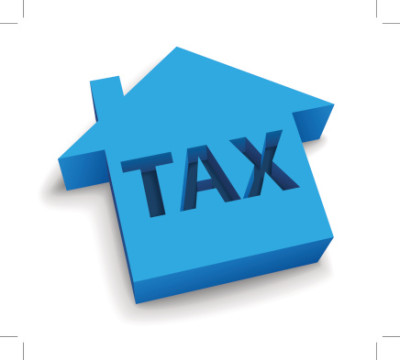New research suggests that the best way to reduce property taxes in the state of Illinois is to have the state to take over a greater burden of funding for public schools and consolidate some of the taxing bodies, including some units of government in the state.
Dr. Robert Bruno, one of the two authors of the study and director of the Project for Middle Class Renewal at the University of Illinois, argues that consolidating some of the 1400+ townships and taxing bodies would provide a modest amount of relief. “Townships are not big recipients of local property taxes, but we thought it would make sense to assess that. What we determined was that residents might see a savings of roughly 1-2% in their property tax bill, coming out to about $61 per year for each homeowner. It doesn’t generate a robust effect. In fact, it’s actually quite modest, but we thought it was worth looking at. Illinois does have an above the national average number of local government entities.” By consolidating townships, the report suggests that $11 million would be added to the economy and 100 new jobs would be created.
Bruno says that the figures they came up with were determined by consolidating about 20% of the number of taxing bodies in the state. He says the study doesn’t really answer the question about duplication of services provided by those townships or taxing bodies. Bruno says that elimination of a taxing body doesn’t eliminate the need for people, materials, services, and overhead. “Most studies of consolidation say it produces a neutral effect, but perhaps you can find a sweet spot where taxpayers can get a bigger bang for your buck.” As far as eliminating bureaucracy, Bruno says that consolidation shouldn’t really question if there is too much government but rather if the government is actually working properly. “It’s good to not think of bureaucracy in an ideological way, because that amount of people is actually making the trains run. The real question is whether the trains are running well. Are we getting good service for the amount of people that we have employed?”
Bruno said the bigger focus of their study is that the state doesn’t pick up enough of the bill when it comes to public education funding. Specifically, they point to the fact that property taxes account for two-thirds of school funding in Illinois while the state pays only about 27 percent, or about half the national average. They also point out the flaws in the current funding formula for schools and federal and state mandates. The study points to the state’s Property Tax Extension Limitation Law, or PTELL, which allows automatic property tax increases each year, but also caps those increases at the rate of inflation or 5 percent, whichever is less, thus preventing many local governments, and especially school districts, from raising the revenue they need. Their proposal is to raise the state’s contribution to public education by $5 billion over four years. That would be in addition to the increased funding that comes through the state’s new Evidence Based Funding formula, which calls for an added $350 million for education funding each year. The new money would be distributed proportionately to all 852 school districts, effectively covering their future increases under the PTELL law and enabling them to hold their property taxes flat for four years. “State and federal mandates have good intentions. One could understand taking on a particular service or practice, but are they actually going to provide resources to meet these mandates? If not, you are then further burdening the local school community to meet them. A large percentage of school districts in this state are not very well resourced. A lot of them do not run effectively. They don’t balance their budget and they have deficit spending. A lot of them have very small or just enough reserves that the law allows them – which I believe is 3 months – on hand. These mandates continue to come down. Any mandate has a cost attached to them.”
According to the report, Illinois currently pays the 7th highest property taxes in the nation, with roughly 2/3rds going to school districts. Average Illinois homeowners pay 7.4 percent of their income on property taxes, compared to just 4.95 percent in income taxes. The report also says that property taxes are regressive because lower-income homeowners have much more of their total personal wealth invested in their home than upper-income people. According to the report, a household earning $35,000 per year, for example, pays on average 10% of their taxable income in property taxes, compared to 7% for someone earning $75,000 a year, and just 1% for people with yearly incomes over $1 million. Using economic modeling formulas, the report estimate the net impact of increasing the state’s investment in education and holding down school district property taxes would be able to grow the Illinois economy by about $1.2 billion and adding up to 14,000 new jobs.
Illinois lawmakers passed Senate Bill 1932 earlier this year establishing a bipartisan Property Tax Relief Task Force. It was part of Democratic Governor J.B. Pritzker’s so-called “fair tax” package that also included a proposed constitutional amendment allowing the state to levy a multi-tiered “graduated” income tax in which people would pay higher rates on higher levels of income. Voters will decide on that amendment in the November 2020 elections. Pritzker has said he wants part of the new revenue from a graduated tax — estimated at about $3 billion a year — to go toward local property tax relief by raising the current property tax credit that property owners can take on their income taxes, according to a report from Capitol News Illinois.
Illinois lawmakers on the governor’s Property Tax Relief Task Force has a report due to the state by end of the month to see if they will consider any of the proposed changes.




